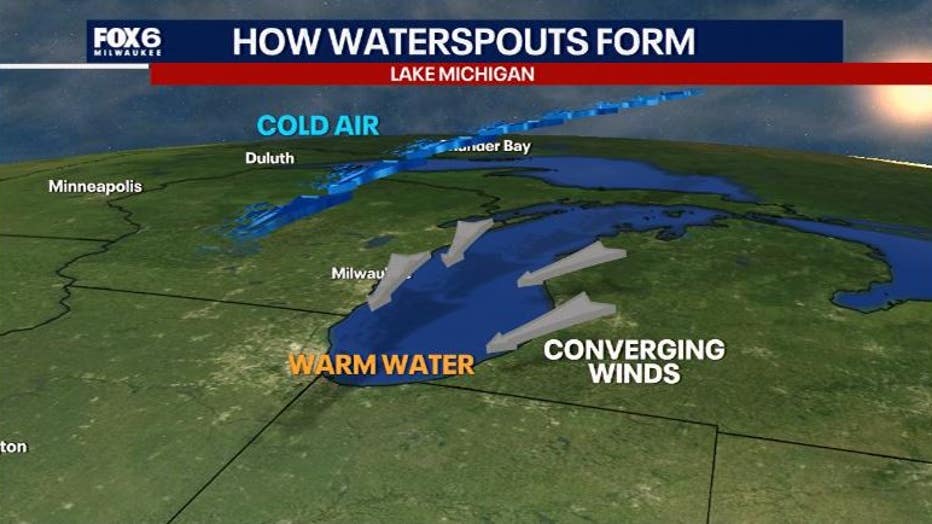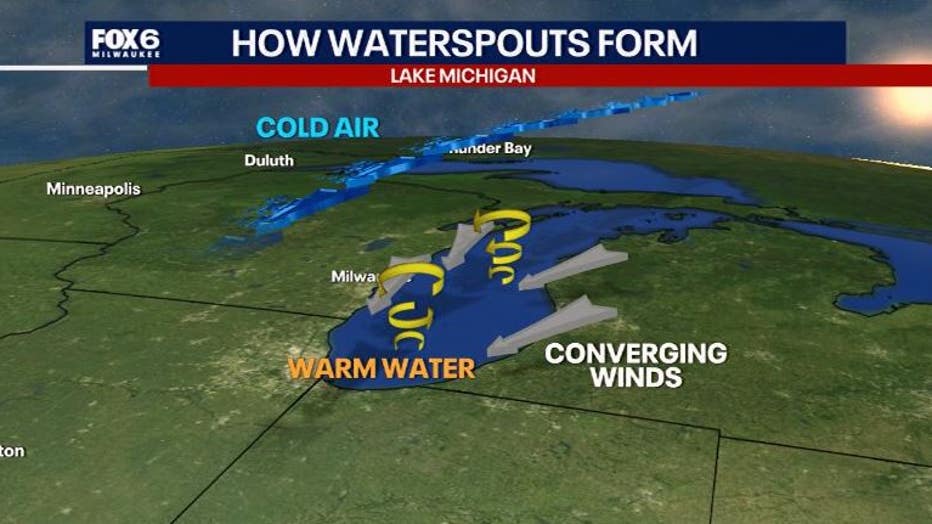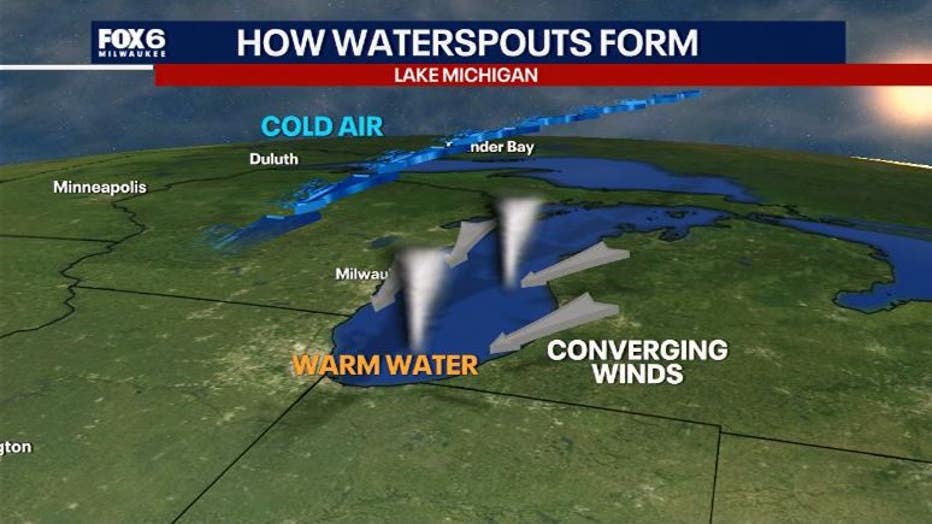Southeast Wisconsin rain Tuesday; waterspouts possible
MILWAUKEE - A low pressure system tracks from southern Illinois to southern Michigan on Tuesday, Sept. 24, bringing a chance for thunderstorms and waterspouts over the southern part of Lake Michigan.
The rain will continue through the day and wrap up around dinner time. The rain is also going to keep temperatures cooler in the 60s, which may lead to cool phenomena-waterspouts.
What is a waterspout? A waterspout is generally described as a tornado occurring over water. To be specific, it is referred to as a small, weak rotating column of air over water that is beneath a towering cumulus cloud.
SIGN UP TODAY: Get daily headlines, breaking news emails from FOX6 News
Waterspouts frequently occur in northern Michigan when the waters of the Great Lakes are near their warmest levels of the year – which are during the months of August, September, and October, according to the National Weather Service.
Waterspouts can last anywhere from two to 20 minutes. They form when cold air moves across the Great Lakes, resulting in large temperature differences between the overriding cold air and warm water.

You can see in the picture above that cold air from the north is moving across the Great Lakes with warm water present from Lake Michigan. Converging winds (wind coming together off of the lake) is the next ingredient you need. (Pictured below)
Once you have all the ingredients necessary (cold air, warm water, and converging winds), a weak rotation begins to circulate, forming a vortex. (Pictured below)

Finally, the waterspout is born. (Pictured below) There are two types of waterspouts: tornadic and fair weather.
Tornadic waterspouts generally begin as true tornadoes over land in association with a thunderstorm, and then move out over the water. They can be large and are capable of considerable destruction.
Fair weather waterspouts form over open water. They develop at the surface of the water and climb skyward in association with warm water temperatures and high humidity in the lowest several thousand feet of the atmosphere. They are usually small, relatively brief, and less dangerous. The fair weather variety of waterspouts is much more common than the tornadic.


